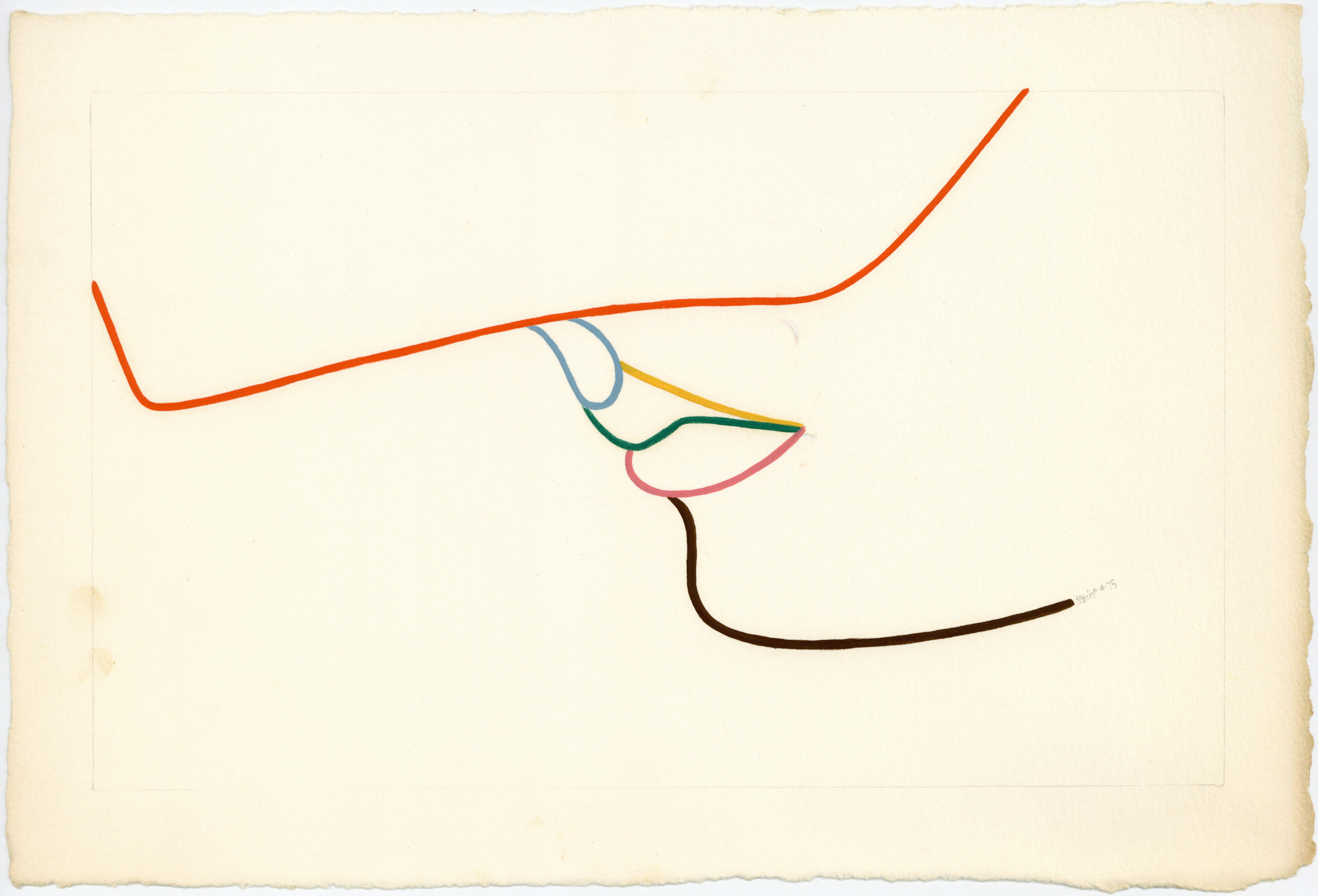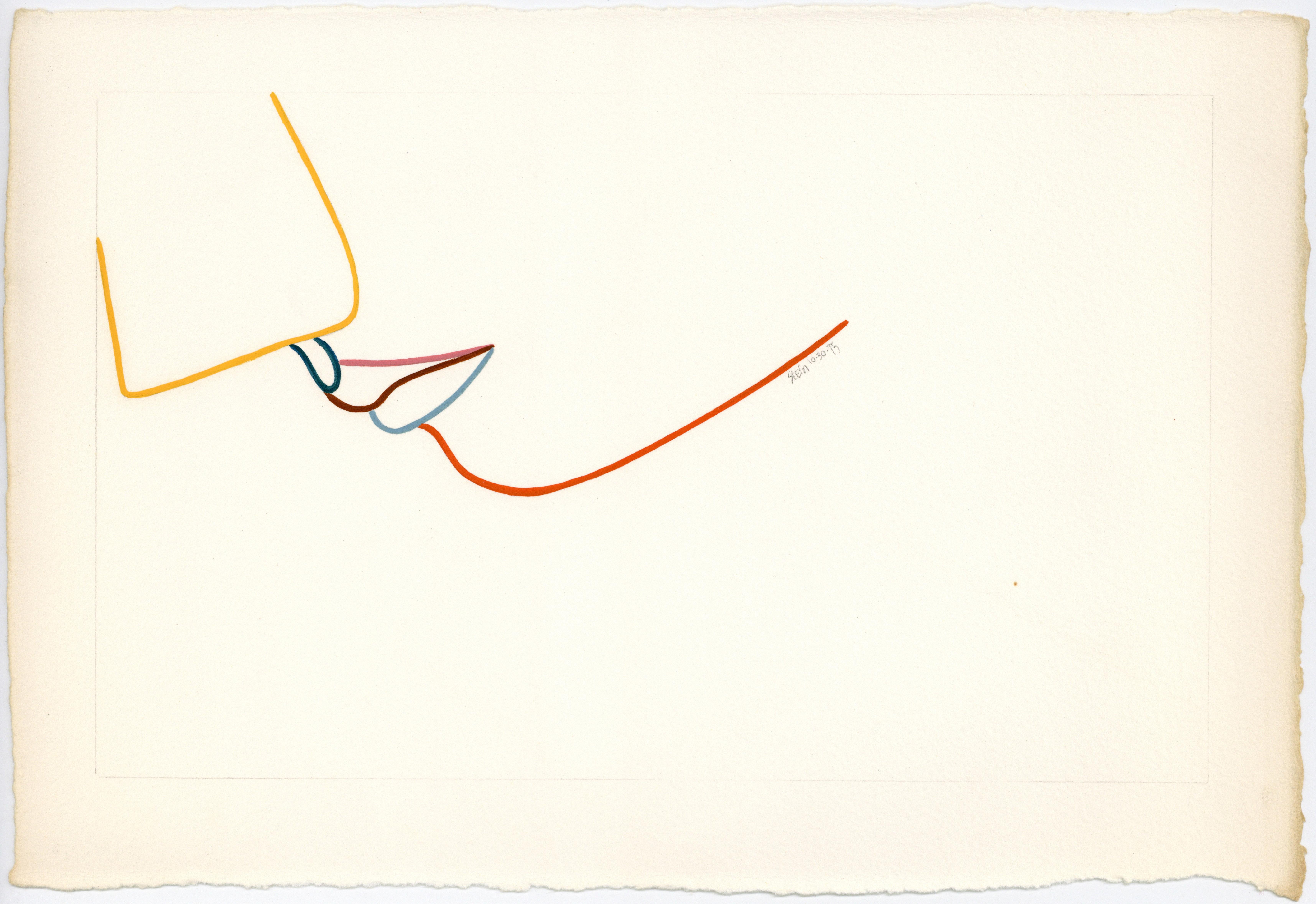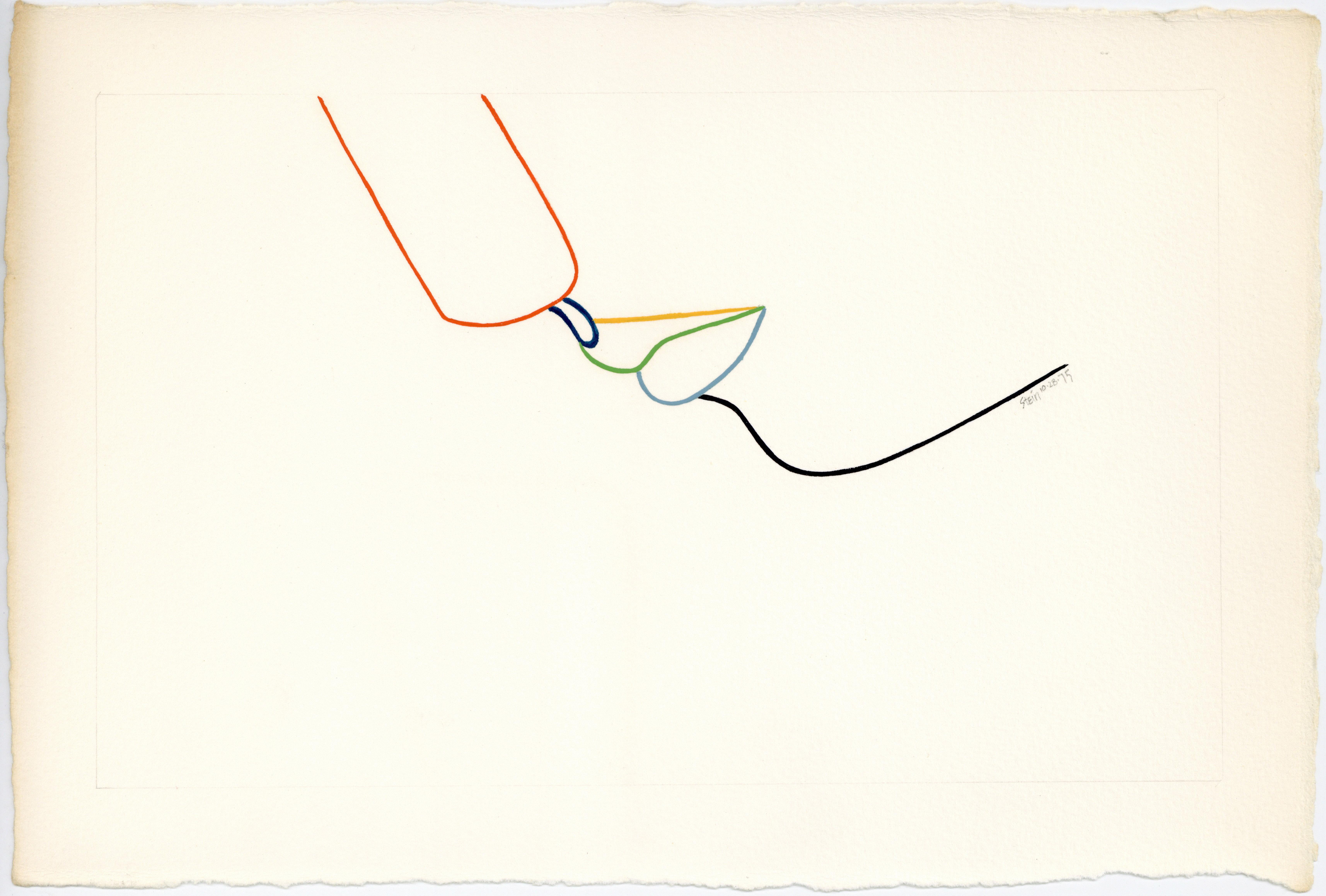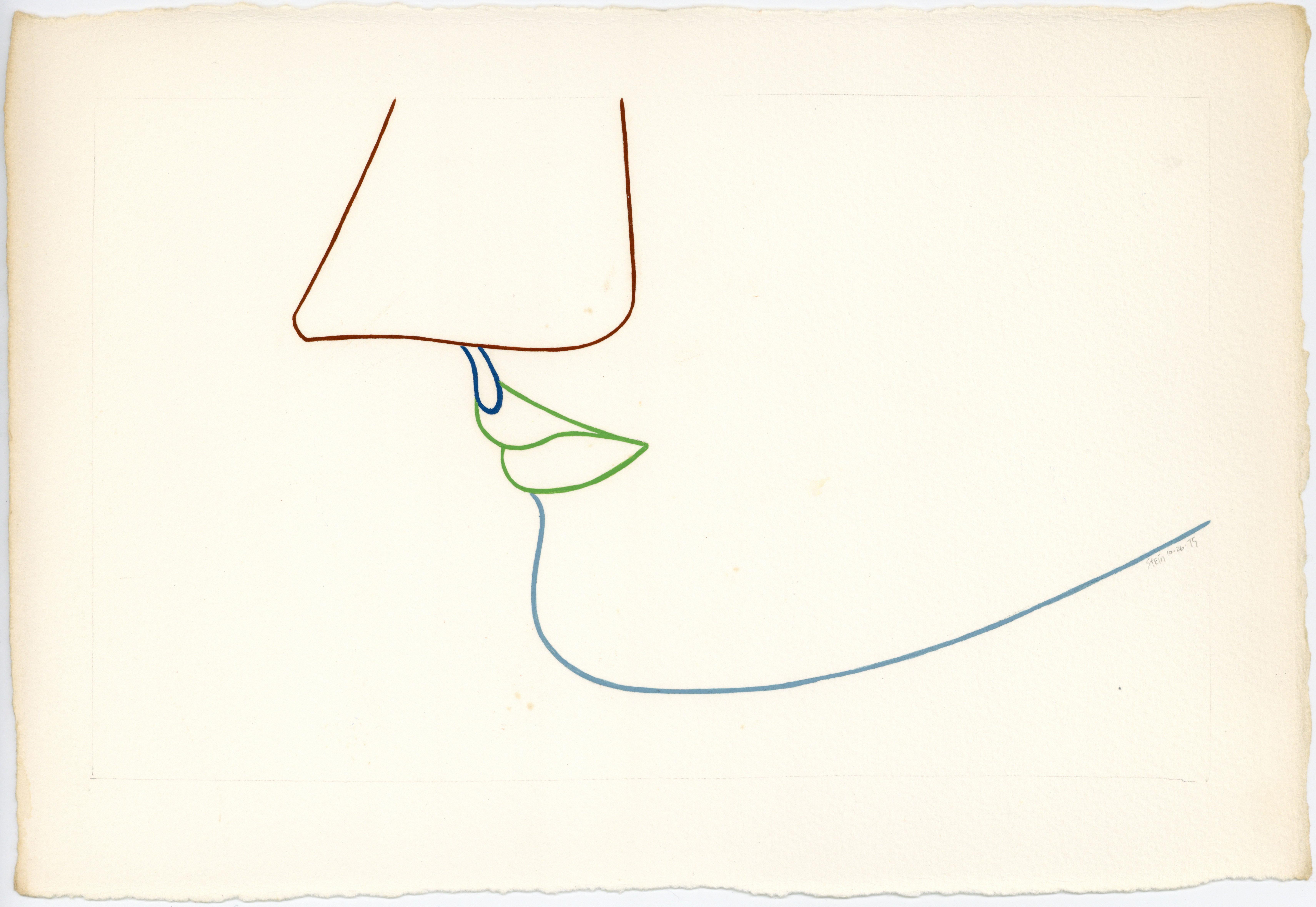Items Similar to "A Martinique Native in French Guyana, " Black Female Portrait, Female Artist
Want more images or videos?
Request additional images or videos from the seller
1 of 8
May Mott Smith"A Martinique Native in French Guyana, " Black Female Portrait, Female Artistcirca 1925
circa 1925
About the Item
May Mott Smith (1879 - 1952)
A Martinique Native in French Guiana, circa 1925
Watercolor on paper
24 x 20 inches
Signed lower right; titled on the reverse
“Martinique Native” is an excellent example of Mott-Smith’s finest work. She depicts a regal Martiniquais woman in French Guiana dressed in boldly-colored clothing and gold jewelry. This empathetic depiction of a dignified Afro-Caribbean woman was extremely rare in U.S. art of the period and illustrate why Mott-Smith’s skillful paintings continue to charm in the twenty-first century.
May Mott-Smith (1879-1952) was a woman ahead of her time. In an era when the possibilities for women were extremely limited, the thrice-married Mott-Smith roamed across the globe, working as a painter, sculptor, jewelry designer, and travel writer. The watercolors by this intrepid traveler and unique woman painter continue to appeal to this day.
May was born in Honolulu in 1879. Her father, John Mott-Smith went to the Kingdom of Hawaii (it did not become part of the United States until 1898) after the California Gold Rush and worked as one of the first dentists on the island. He then became a politician, newspaper editor, diplomat, and land speculator. By the time he died in 1895, he left his seven children an estate worth about $300,000 including sugar plantations. May’s share was estimated between $60,000 and $90,000 (about 2 to 3 million in 2020 dollars).
May Mott-Smith began painting at 11 years old and studied art in Paris at Académie Colarossi and Mark Hopkins Institute in San Francisco. She exhibited her work at the Saint Louis Exposition (1904), the Panama-Pacific Exposition (1915; silver medal for jewelry), and the Panama-California Exposition (San Diego, 1915-17; bronze medal for bas relief), as well as in Paris, New York, Chicago, San Francisco, Los Angeles, and Honolulu. In addition to painting, sculpting, and designing jewelry, Mott-Smith created miniatures, plaques, and medals of famous people.
In the 1920s, she began to travel the world in search of artistic material, especially visiting places where most U.S. women would not dare to go. After a trip to Afghanistan, she wrote a pamphlet in 1929 entitled On the Khyber to Kabul. Her experiences in Soviet Russia yielded Roughing It in Russia On Twenty Dollars a Day. A Jamaican newspaper noted in 1934 that she was “one of the select few women who have invaded Devil’s Isle in Cayenne, the French convict settlement.”
Her most easily accessible literary work is Africa from Port to Port (1930) in which she described a two-year tour around the coast of Africa as a single woman. Her journey began in Tripoli, went west to Morocco and then south to Senegal and Cape Town, up the east coast of Africa (including Madagascar) and ended at Port Said. Mott-Smith’s writing gave a vivid eye-witness account of Africa in its mid-colonial stage, with its dirty hotels, impassable roads, and boisterous street scenes. Although she displayed the typical prejudices of her time, her travelogue remains a valuable resource. One reviewer noted that “she has an observing eve and a bright pen, besides a camera, which she used generously and cleverly to illustrate her story.” Her book was illustrated by Al Hirschfeld (1903-2003), later a world-famous caricaturist.
Wherever she traveled, Mott-Smith painted the local scenery and native inhabitants, often with a broad free technique and loose brushwork. Some examples of her exotic subject matter include scenes set in China, Afghanistan, Switzerland, Italy, Croatia, and Africa. In 2016, her watercolor “View of Hong Kong Harbor” sold for $7,750. She also painted domestic scenes and landscapes.
Mott-Smith spent her declining years at the Windermere apartment house (West 57th St. and 9th Ave.) in New York City from 1944 until her death in 1952 at age 73. She was buried in Oahu Cemetery, Hawaii.
- Creator:May Mott Smith (1879 - 1952)
- Creation Year:circa 1925
- Dimensions:Height: 29 in (73.66 cm)Width: 25 in (63.5 cm)
- Medium:
- Movement & Style:
- Period:
- Condition:Excellent. Frame has some chips and abrasions.
- Gallery Location:New York, NY
- Reference Number:1stDibs: LU184129904242
About the Seller
5.0
Platinum Seller
These expertly vetted sellers are 1stDibs' most experienced sellers and are rated highest by our customers.
Established in 2021
1stDibs seller since 2022
63 sales on 1stDibs
Typical response time: <1 hour
- ShippingRetrieving quote...Ships From: New York, NY
- Return PolicyA return for this item may be initiated within 3 days of delivery.
More From This SellerView All
- "Young Girl (Jenue Fille)" Louis Valtat, French DrawingBy Louis ValtatLocated in New York, NYLouis Valtat Young Girl Stamped with initials lower right Pencil on brown paper Sight 7 x 6 inches Provenance: Mrs. Ernest M. Werner, New York Private Collection, Rhode Island Loui...Category
Early 20th Century Fauvist Figurative Drawings and Watercolors
MaterialsPaper, Pencil
- "March Avery in Beret, " Milton Avery, American Modernism, Portrait of ArtistBy Milton AveryLocated in New York, NYMilton Clark Avery (1885 - 1965) March Avery in a Beret, 1951 Black crayon and graphite on cream wove paper 11 x 8 3/8 inches Signed and dated lower left; ...Category
1950s American Modern Portrait Drawings and Watercolors
MaterialsGraphite, Crayon, Paper, Pencil
- "In Foreign Parts" Eugene Higgins, Southwestern Pueblo, Modern FigurativeBy Eugene HigginsLocated in New York, NYEugene Higgins In Foreign Parts, circa 1913 Signed lower right Watercolor on paper Sight 17 x 13 inches Born William Victor Higgins in 1884 to a Shelbyville, Indiana farm family where the only art Victor was aware of as a child was his father's love of flowers. "He loved their forms and their colors, and he tended his garden as a painter might work a canvas." At the age of nine, Victor met a young artist who traveled the Indiana countryside painting advertisements on the sides of barns. He purchased paints and brushes so the young Higgins could practice his own artwork on the inside of his father's barn. He also taught Victor about art museums and especially about the new Chicago Art Institute. This information never left the young artist, and he saved his allowance until his father allowed him at the age of fifteen to attend Chicago Art Institute. He worked a variety of jobs to finance his studies both there and at the Academy of Fine Arts. Victor Higgins traveled to New York in 1908, where he met Robert Henri, who became a significant influence by depicting every-day scenes and stressing the importance of the spirit and sense of place as important factors in painting. Higgins was also greatly affected by the New York Armory Modernism Show of Marsden Hartley in 1913. While Victor Higgins was in Chicago he met former mayor and avid collector Carter H. Harrison who was to prove instrumental in the growth of Higgins career for several years. Harrison agreed to support Higgins for four years to go to Paris and Munich and paint and study in the great museums in Europe. While at the Academie de la Grande Chaumier in Paris (1910-1914) he met Walter Ufer, who was another Chicago artist being sponsored by Carter Harrison. This meeting was not only a life-long friendship, but the beginning of a great change in the way Higgins looked at "American" art. He decided that America needed it's own authentic style rather than the 19th Century classic style he was taught in Europe. Very soon after returning to Chicago in 1914, Harrison sent him and Walter Ufer on a painting trip to Taos, New Mexico for a year in exchange for paintings. Higgins made other similar agreements and was able to support himself with his painting. This trip was a life-changing experience and introduced Higgins to the authentic America he had been looking for. In 1914 Taos was an isolated village about twelve hours from Santa Fe on an impossible dirt road. But the colorful life of the pueblo people and the natural beauty drew a collection of artists who became the Taos art colony, from which the Taos Society of Artists was founded in 1915. Victor Higgins became a permanent resident within a year of his arrival and a member of the society in 1917, exhibiting with Jane Peterson in 1925 and with Wayman Adams and Janet Scudder in 1927. The members would travel around the country introducing the Southwest scenes with great success. He remained a member until the Society's dissolution in 1927. Higgins was the youngest member of the group of seven. Other members were Joseph Henry Sharp, Bert Phillips...Category
1910s American Modern Figurative Drawings and Watercolors
MaterialsWatercolor, Paper
- "Portrait of an Italian Fencer, " John Frederick Kensett, Hudson River SchoolBy John Frederick KensettLocated in New York, NYJohn Frederick Kensett (1816 - 1872) Portrait of an Italian Fencer, circa 1845-47 Watercolor on wove paper 13 1/8 x 8 1/8 inches Signed with initials and inscribed lower right "J.F.K. Rome" From October 1845 through the spring of 1847, Kensett lived in Rome. He attended classes where he sketched from live models, and he sketched in the countryside outside Rome and around Florence, Perugia, and Venice, places he visited with his artist friends. He fulfilled commissions for paintings from Americans in Italy, and by 1847 his career was well established. Son of an English immigrant engraver, John Kensett lacked enthusiasm for that medium and became one of the most accomplished painters of the second generation of Hudson River School painters. His reputation is for Luminism, careful depiction of light, weather, and atmosphere as they affect color and texture of natural forms. He was particularly influenced by the painting of Asher Durand in that he focused on realism and detail rather than the highly dramatic views associated with Thomas Cole. Going to the western United States in the mid 1850s and the 1860s, he was the first of the Hudson River School painters to explore and paint the West. Kensett was born and raised in Cheshire, Connecticut, and learned his engraving from his father, Thomas Kensett with whom he worked in New Haven, Connecticut until 1829. He continued working until 1840 as an engraver of labels, banknotes and maps and was employed part of that time by the American Bank Note Company in New York City. There he met Thomas Rossiter, John Casilear, and other artists who urged him to pursue painting. In 1840, he and Rossiter, Asher Durand, and Casilear went to Europe where Kensett stayed for seven years and supported himself by doing engraving but became accomplished in landscape painting. Having sent canvases of Italian landscapes back to New York, he had a reputation for skillful painting that preceded him. When he returned to New York City in 1847, he was an "instant success" and very sought after by collectors. Two of his Italian landscapes had already been purchased by the American Art Union. By 1849, he was a full member of the National Academy of Design and was generally popular among his peers. His studio was a gathering place with travelers stopping by to see his canvases and to identify "precise locations in the Catskills or Newport or New England in the oil sketches and drawings that covered his walls." (Zellman 170). For the women, he was a popular bachelor, "romantic looking with high forehead and sensitive expression." (Samuels 262) He was also sought after by many organizations. Among his activities were serving on the committee to oversee the decoration of the United States Capitol in Washington DC, and becoming one of the founders of the Metropolitan Museum in New York. An inveterate traveler, Kensett spent summers on painting excursions away from New York City. One of these trips was a special painting excursion with fifteen other artists sponsored by the B & O Railroad from Baltimore, Maryland to Wheeling, West Virginia. Unlike many of the Hudson River painters...Category
1840s Hudson River School Figurative Paintings
MaterialsWatercolor, Paper
- "Reclining Nude" Everett Shinn, Figurative Woman Watercolor, Ashcan SchoolBy Everett ShinnLocated in New York, NYEverett Shinn Reclining Nude, 1940 Signed and dated lower left Watercolor on paper 4 1/2 x 9 inches Provenance: Christie's New York, Interiors, August 28, 2012, Lot 181 Private Collection Everett Shinn, a future member of the Eight and remarkable, rather theatrical personality was born at Woodstown, New Jersey in 1873. Even more recent sources give 1876 as the year of Everett Shinn's birth but the artist usually lied about his age to appear younger than he actually was. Edith DeShazo claimed that information from family members established the date of November 6, 1876 as Shinn's birthday. But if this is true, he would have enrolled at the Spring Garden Institute in Philadelphia to study industrial art at the age of twelve. Born to a Quaker named Isaiah Conklin Shinn and Josephine Ransley Shinn, Everett was their third child. He enjoyed a happy childhood as an undisciplined boy fond of sweets, acrobatics, and the circus. Shinn opted for the Pennsylvania Academy of the Fine Arts for instruction in the fall of 1893, and began as a staff artist for the Philadelphia Press. At that time William Glackens was working there as well, while John Sloan was at the Inquirer. A year later, Glackens was at the Press, and also, in 1894, George Luks joined the staff there. As DeShazo explained, "the Press art department became a meeting place for men both on the staff and off with similar artistic and literary interests." Members of the same group also met at Robert Henri's studio. By 1897, Shinn was in New York, working for the New York World where Luks had been for about a year. The rest of the "Philadelphia Four" would follow them before long. Shinn spent much of 1898 hounding the offices of Harper's until finally, the editor and publisher, Colonel George Harvey saw his portfolio, then commissioned a view of the Old Metropolitan Opera House in a snowstorm. The pastel appeared about a year later in the February 17th issue of Harper's Weekly, in 1900. Meanwhile, Shinn kept busy with decorative work (murals, screens, and door panels) at private residences and even in Trenton, New Jersey's City Hall. In 1899, the Boussod-Valadon Galleries gave Shinn his first one-man show. He continued to carry out commissions for illustrations. Shinn began exhibiting at the Pennsylvania Academy (1899-1908) and at the Art Institute of Chicago (1903-43). A trip to Europe is documented in 1900 by an exhibition at Goupil's in Paris and by various drawings of Paris...Category
1940s Ashcan School Figurative Drawings and Watercolors
MaterialsWatercolor, Paper
- "Untitled" Bob Thompson, Figurative Work on Paper, Black Abstract ArtistBy Bob ThompsonLocated in New York, NYBob Thompson Untitled, 1964 Felt tip pen on printed paper 11 x 20 1/2 inches Provenance: The artist Kathy Komaroff Goodman (gift from the artist) Hollis Taggart, New York Exhibited...Category
1960s Modern Figurative Drawings and Watercolors
MaterialsWatercolor, Paper
You May Also Like
- Signed Feminist LGBTQ+ Acrylic Goauche on Paper Drawing - Profile Solid 383.071Located in New York, NYLinda Stein, Profile Solid 383.071 - Signed Feminist LGBTQ+ Acrylic and Goauche on Paper Drawing Profile Solid 383.071 is from Linda Stein's Profiles series--drawings, collages an...Category
1970s Feminist Figurative Drawings and Watercolors
MaterialsPaper, Acrylic, Gouache
- Signed Feminist LGBTQ+ Acrylic Goauche on Paper Drawing - Profile Solid 383.070Located in New York, NYLinda Stein, Profile Solid 383.070 - Signed Feminist LGBTQ+ Acrylic and Goauche on Paper Drawing Profile Solid 383.070 is from Linda Stein's Profiles series--drawings, collages an...Category
1970s Feminist Figurative Drawings and Watercolors
MaterialsPaper, Acrylic, Gouache
- Signed Feminist LGBTQ+ Acrylic Goauche on Paper Drawing - Profile Solid 383.065Located in New York, NYLinda Stein, Profile Solid 383.065 - Signed Feminist LGBTQ+ Acrylic and Goauche on Paper Drawing Profile Solid 383.065 is from Linda Stein's Profiles series--drawings, collages an...Category
1970s Feminist Figurative Drawings and Watercolors
MaterialsPaper, Gouache, Acrylic
- Signed Feminist LGBTQ+ Acrylic Goauche on Paper Drawing - Profile Solid 383.082Located in New York, NYLinda Stein, Profile Solid 383.082 - Signed Feminist LGBTQ+ Acrylic and Goauche on Paper Drawing Profile Solid 383.082 is from Linda Stein's Profiles series--drawings, collages an...Category
1970s Feminist Figurative Drawings and Watercolors
MaterialsAcrylic, Gouache, Paper
- Signed Feminist LGBTQ+ Acrylic Goauche on Paper Drawing - Profile Solid 383.063Located in New York, NYLinda Stein, Profile Solid 383.063 - Signed Feminist LGBTQ+ Acrylic and Goauche on Paper Drawing Profile Solid 383.063 is from Linda Stein's Profiles series--drawings, collages an...Category
1970s Feminist Figurative Drawings and Watercolors
MaterialsAcrylic, Gouache, Paper
- Signed Feminist LGBTQ+ Acrylic Goauche on Paper Drawing - Profile Solid 383.066Located in New York, NYLinda Stein, Profile Solid 383.066 - Signed Feminist LGBTQ+ Acrylic and Goauche on Paper Drawing Profile Solid 383.066 is from Linda Stein's Profiles series--drawings, collages an...Category
1970s Feminist Figurative Drawings and Watercolors
MaterialsPaper, Acrylic, Gouache
Recently Viewed
View AllMore Ways To Browse
Antique In French
Female Artists
Native Artists
Antique Design Jewelry
Female Portraits
One In A Million
French Female Artists
Chinese Portrait Artists
Painting By Black Female Artist
Female Designer
Portrait Of French Women
Portrait Jewlery
Native Gold
An Example Of Art By A Female Artist
1920s French Drawing
Caribbean Artists
French Female Portrait
Native Woman





